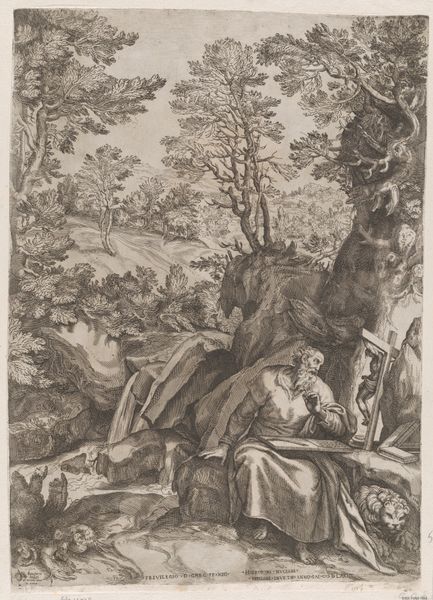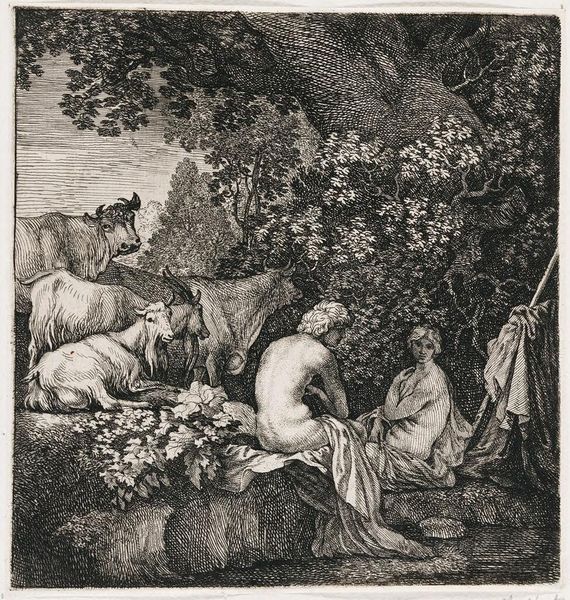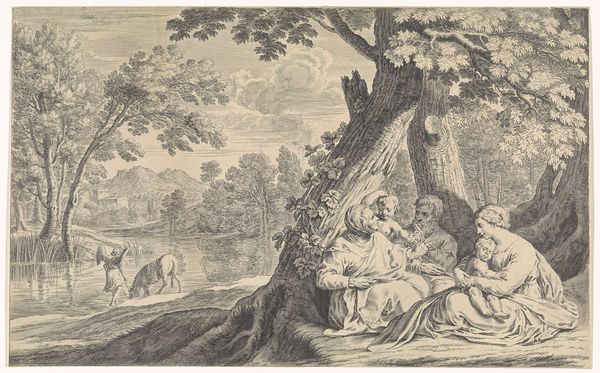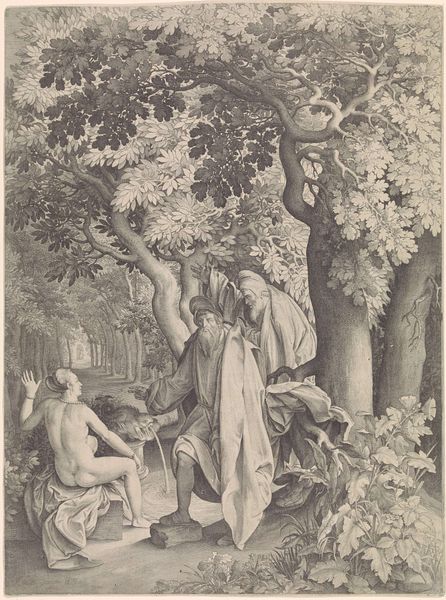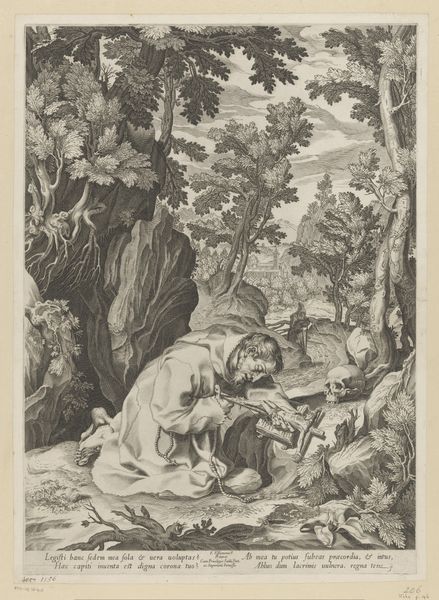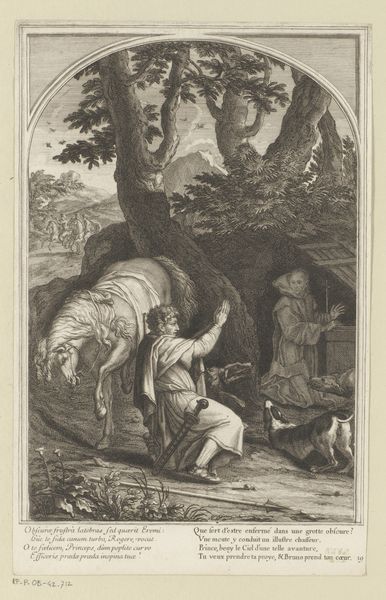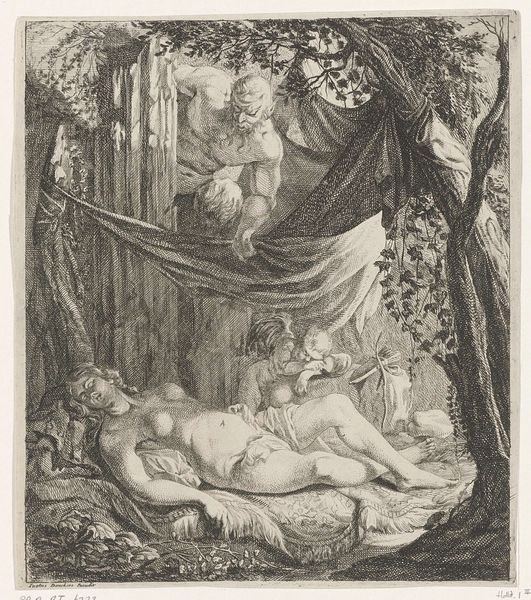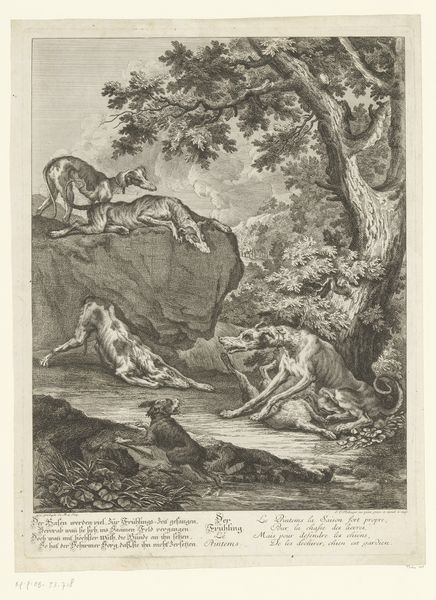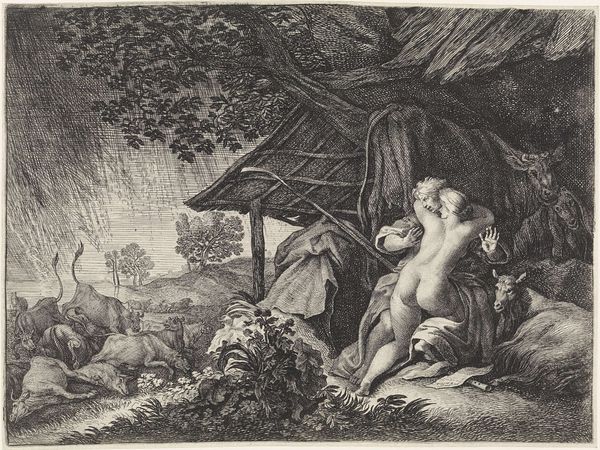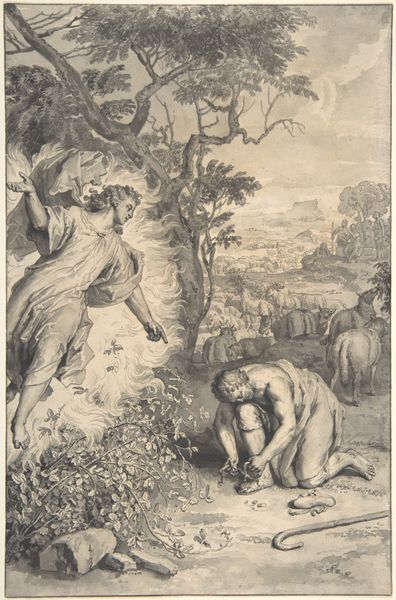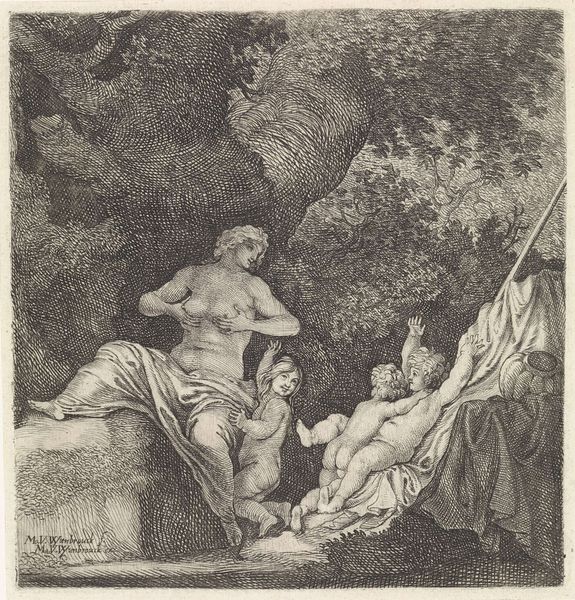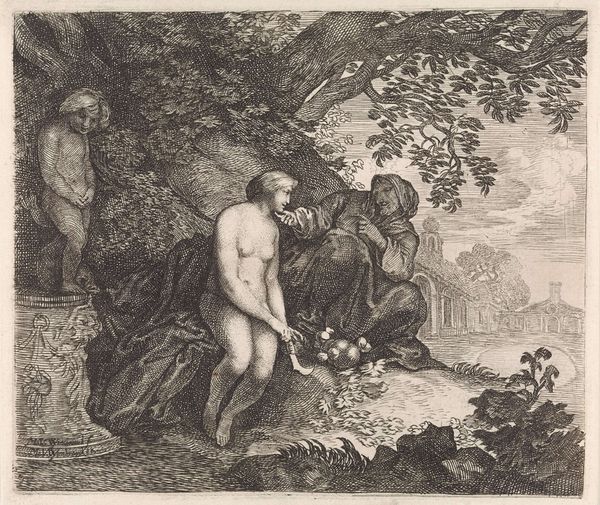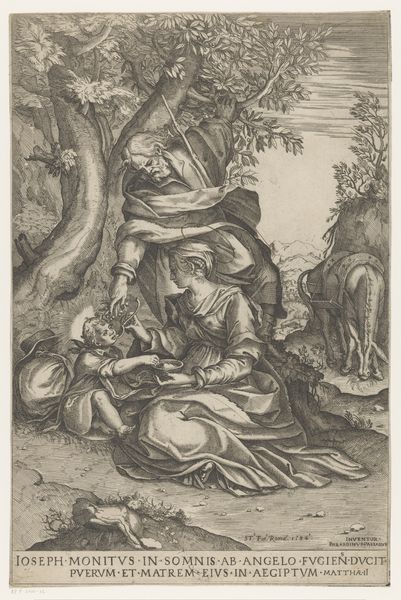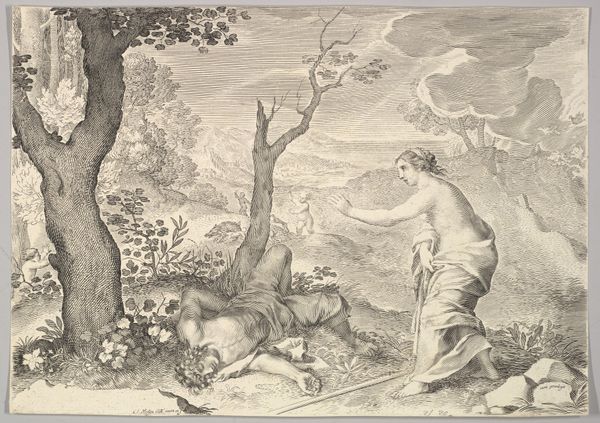
etching
#
narrative-art
#
baroque
#
etching
#
landscape
#
figuration
#
genre-painting
Dimensions: height 161 mm, width 153 mm
Copyright: Rijks Museum: Open Domain
Moyses van Wtenbrouck created this etching called ‘Herders bij een vijver’ or 'Herdsmen by a pond' in the Netherlands during the first half of the 17th century. It depicts a scene of pastoral leisure and abundance. The composition evokes a classical arcadia. The Netherlands, recently independent, was establishing itself as a world power and competing with other European nations. The image is striking because it is so at odds with the reality of Dutch expansionism. The presence of well-fed livestock, the abundance of foliage and the implied fertility of the two figures, set within a small frame, give a clear sense of the imagined possibilities of colonialism. The visual language derives from classical imagery, but through an early modern lens, and for a contemporary audience. Van Wtenbrouck’s work should prompt us to ask: how do the social and economic realities of Dutch society shape the pastoral fantasies seen here? Studying the history of Dutch trade and colonial expansion can provide insight into the values and ideologies circulating at the time this image was made.
Comments
No comments
Be the first to comment and join the conversation on the ultimate creative platform.
